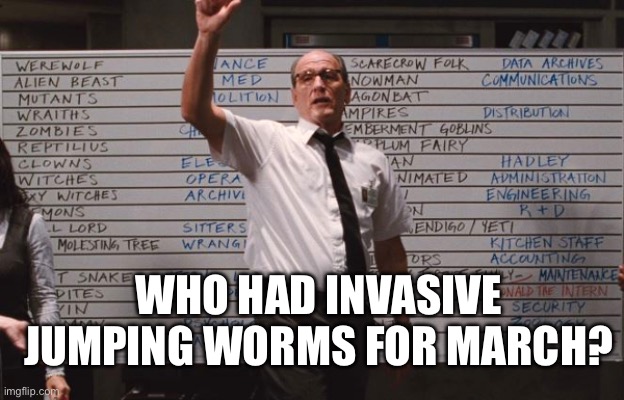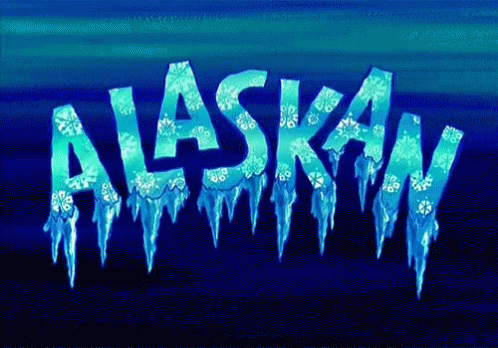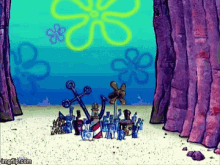
Posted on 03/07/2023 12:50:42 PM PST by Red Badger

(Invasive Jumping Worm, Provided Photo/Purdue Agricultural Communications)
INDIANAPOLIS (WISH) — Remember the murder hornets? Well now make way for the invasive jumping worms.
Purdue educators are letting landowners and gardeners know about an invasive species of earthworms that is wreaking havoc in southern Indiana.
“Traditionally, when we see earthworms, they are deep in the ground and a little slimy. The jumping worms are a little bit bigger, kind of dry and scaly, and tend to thrash around much like a snake does.”
While earthworms in the springtime are a welcome sight for gardeners, this species consumes all organic material from the top layer of soil. They leave behind a coffee ground-like waste with no nutrients for plants or seeds.
Jumping worms also stay within the first few inches of topsoil, so they do not create channels for water and air the way earthworms do, disrupting the flow to plant roots.
“So basically, they’re just very nasty pests that ruin the quality of our soil, and the only thing that can really grow in soil like that are essentially invasive plants, or species that are meant to survive really harsh conditions,” said Robert Bruner, Purdue Extension’s exotic forest pest specialist.
Bruner said the worms are being found in cities around southern Indiana, particularly in Terre Haute.
The worms don’t seem to be a migrating species, so they move almost entirely through human activity. “They don’t crawl superfast, so when they move, that means they’re moving because we’re transferring soil, say from someone’s plants or someone’s compost and we’re bringing them to a new area,” Bruner explained.
Bruner is working with fellow Purdue Extension educators to spread the message that gardeners should not share ground soil or compost and avoid potted plants from unknown sources.
If you suspect jumping worms are present in your own soil, Bruner suggests a process called solarizing to eliminate unwanted pests. Gardeners should lay down a black or dark-toned tarp on a sunny day and sprinkle a thin layer of soil on top, allowing it to reach a temperature over 105 degrees Fahrenheit.
Bruner cautions that jumping worms can escape during the solarizing process, “so you need to completely wrap the soil up in the tarp, essentially making the world’s worst sandwich, and allow it to heat up and kill whatever is in there.”
Bruner said whether the worms will create a major issue for gardeners this season remains to be seen, but he isn’t as concerned for farmers.
“It’s a bit of a nightmare pest if you do gardening, but we don’t have evidence yet that it will spread into agricultural fields,” he said. “We don’t think it’s going to kill any kind of industry. We’re asking people to be on the lookout and use your best judgment when you’re getting your soil.”
Any invasive species sightings should be reported to the Indiana Department of Natural Resources at depp@dnr.in.gov or by calling 1-866-663-9684.
VIDEO AT LINK...............

(Invasive Jumping Worm, Provided Photo/Purdue Agricultural Communications)
The earthworm and honeybee are both invasive species to North America. They were brought to the continent by European Settlers.
Just night crawlers.
And honey bees.
The honey bee came from Europe.
Why worry about invasive species when 1000s of them cross our southern border with ease?
Just remember to register your garden with the USDA because...earthworms. They won’t take your food...HONEST.
Just add a fish hook.

😜👌🤦♂️......................................
Oh make good fishing bait
Yes!.....................But they damage da erf!..............
While earthworms in the springtime are a welcome sight for gardeners, this species consumes all organic material from the top layer of soil. They leave behind a coffee ground-like waste with no nutrients for plants or seeds.
~~~~~~~~~~~~~~~~~~~~~~~~
Nasty nasty creatures... seen the forest floor destruction firsthand. It’s not pretty....
That “coffee ground waste” is fertilizer.DING who wrote this aerticle?
“Squirm”


That “coffee ground waste” is fertilizer.
~~~~~~~~~~~~~~~~~~~~~~~~~
Sure... but plants can’t absorb it. https://www.thedailygarden.us/garden-word-of-the-day/asian-jumping-worms
Not night crawlers.
Disclaimer: Opinions posted on Free Republic are those of the individual posters and do not necessarily represent the opinion of Free Republic or its management. All materials posted herein are protected by copyright law and the exemption for fair use of copyrighted works.